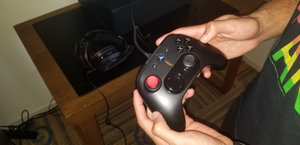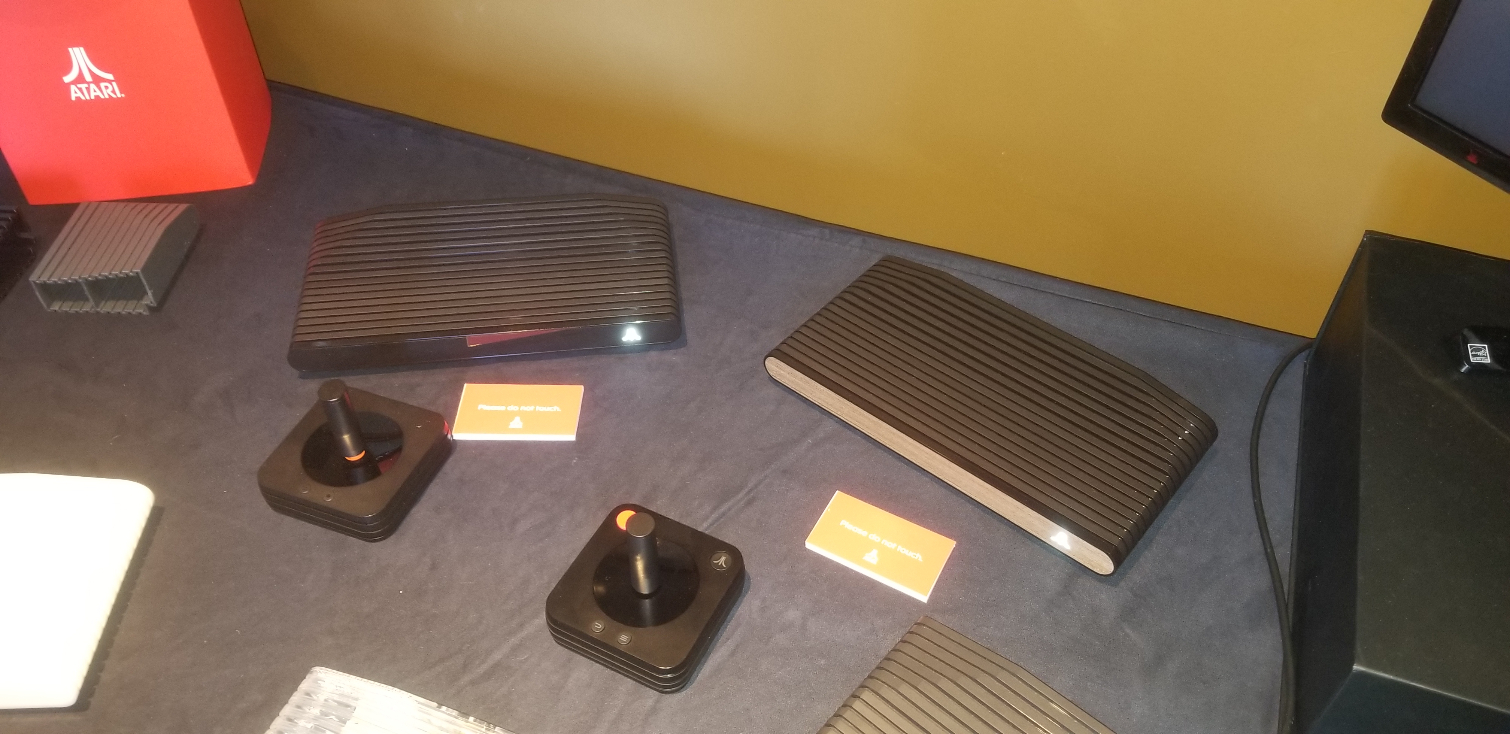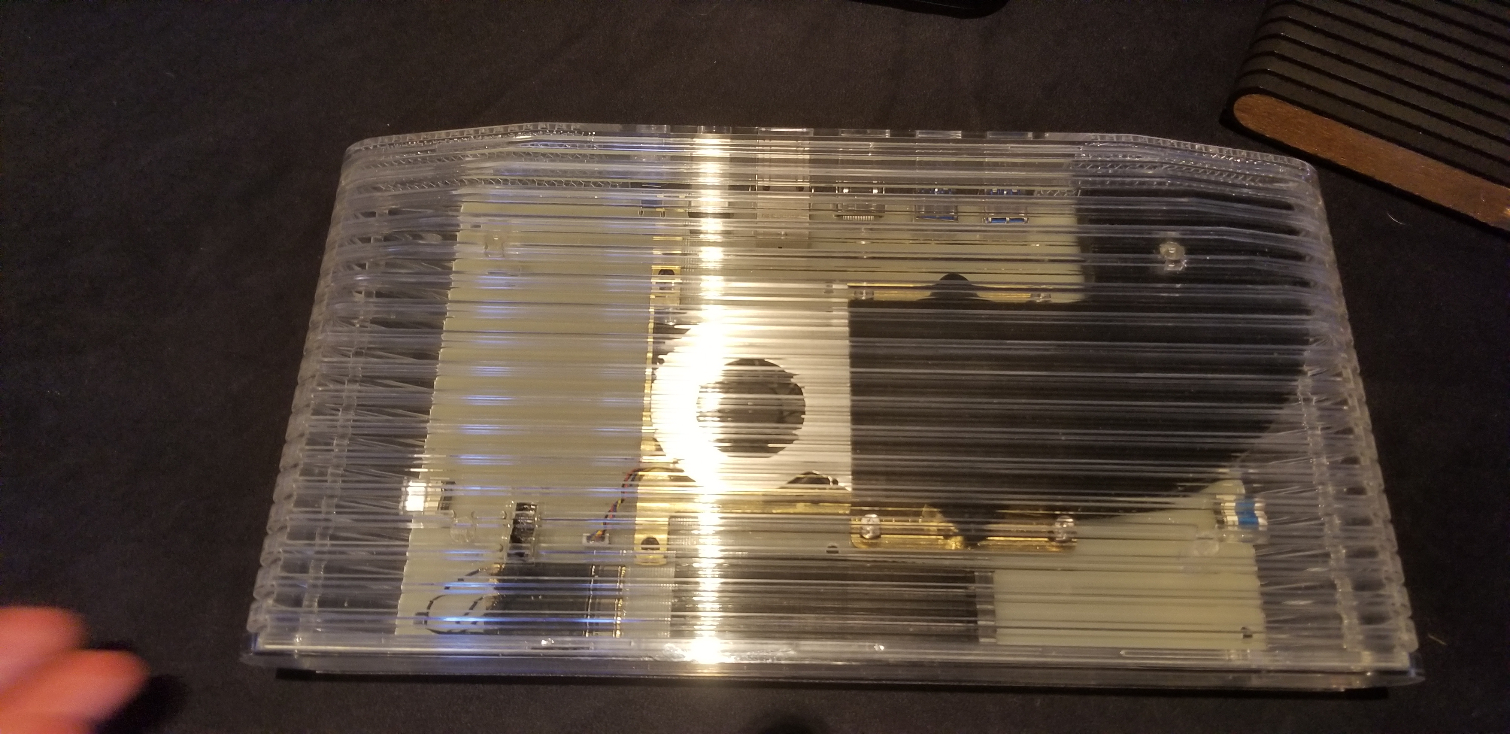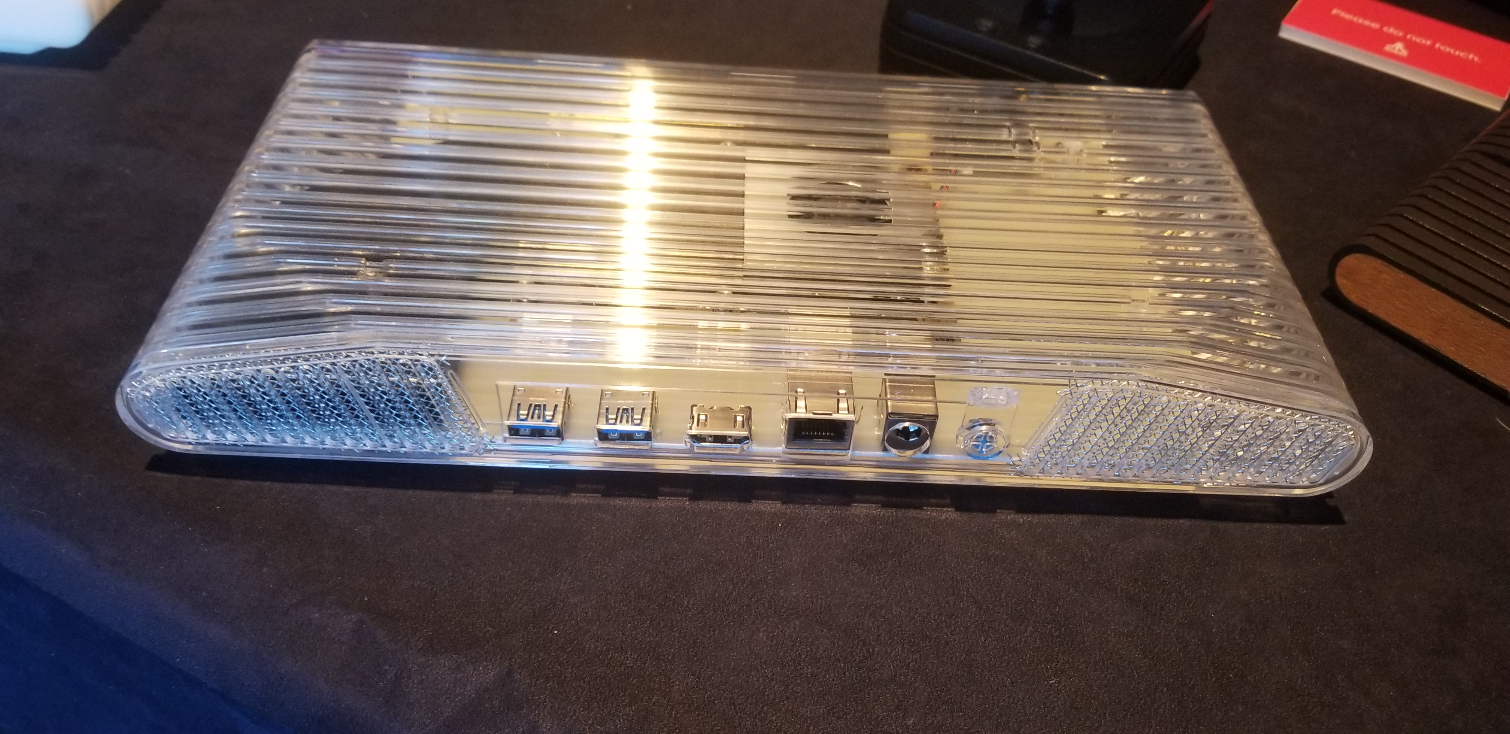Up Close With the Atari VCS, 'The Raspberry Pi for the Living Room'
It's been a long road to Atari's VCS release, kicked off by an Indiegogo campaign that raised $3 million, but the system, which comes powered by an AMD Ryzen processor, is finally up for pre-order starting at $249.
We caught up with Atari at E3 and had a chance to take a deep look at the retro box, but the company's message is clear: The Atari VCS isn't a game console. Even though Atari designed it to be adept at gaming, much like a game console, the VCS fulfills many of the roles of a typical desktop computer and allows for intense customization that the company says makes it "like a Raspberry Pi for the living room."
That all starts with an AMD Ryzen Embedded 1606G processor. The 14nm dual-core, quad-threaded processor has a 2.6 GHz base frequency and a 3.5 GHz boost, paired with the Vega 3 graphics engine. The system comes with its own Linux-based Atari operating system that has a crossbar-style, tiled user interface and includes submenus for games, applications like Netflix and Hulu, social media platforms and an Atari game store. It comes with 100 classic Atari games for the nostalgic. The set-top box has a retro design, but it is actually a modern machine: you can also install new gaming titles, too, like Borderlands 3 or Fortnite.
You can also use the box as a standard PC by installing your own operating system, like Windows 10 or Linux, via a sandbox menu. The VCS supports 4K, 10-bit HDR streaming and HDCP via the single HDMI 2.0 port. It also supports standard AMD Radeon graphics drivers, meaning you have access to all of the latest day-zero driver updates for new games. Unfortunately, the system does not support AMD FreeSync.
Aside from the 32GB eMMC storage that houses the Linux-based Atari operating system, the company opened the entire system up to secondary operating systems, meaning all of the hardware is accessible to the user. That stands in contrast to Sony's practice of allowing users to install another operating system, but then restricting access to key components, like the GPU. Atari's approach allows the system to be fully programmable, so you can create your own apps and programs, hence the Raspberry Pi-type functionality.


The base packages come without a paddle or controller, but they come with the $389.99 bundle or you purchase them separately for $49.99 and $59.99, respectively. The wireless controller clearly draws inspiration from the Xbox controller and comes with five lights aligned down the center to indicate power status. The wireless paddles have a ring of LED lights around the base that light up based upon the paddles' position. Like the controller, the paddle vibrates based on game activity.
Above is a mock-up of the system that shows the internal components. A blower style fan cools the AMD processor, with air exhausting to the rear right of the chassis. Atari said this cooling system is robust enough to run the processors at its full TDP over extended periods, so you won't have to worry about thermal throttling due to the slim chassis design. We see an M.2 slot in the middle front of the system that is fully upgradeable and can house any M.2 SSD. The VCS 400, which is the value-centric model, lacks an M.2 module, while the full-featured VCS 800 comes with a drive (tAtari hasn't specified capacity).
Get Tom's Hardware's best news and in-depth reviews, straight to your inbox.
Two SODIMM slots on the bottom of the motherboard house DDR4-2400 memory. You can also upgrade these modules, meaning you can upgrade both the memory and the storage, but the processor is soldered to the motherboard. The VCS 400 comes with 4GB of memory and is geared for 1080p gaming and streaming, while the VCS 800 comes with 8GB of memory for 4K gaming and streaming. The rear of the machine has two USB 3 ports (two more are nestled under the front overhang), HDMI 2.0 port, Ethernet port and the power port. The VCS uses a 19V external power brick that is roughly the size of the base of the game paddle. The power supply is fully sealed and supplies the required 60W for the system.
Price and Availability
The VCS is available for pre-order now through Atari's online store, GameStop and Walmart. Each retailer carries the Onyx Base model, plus an exclusive $389.99 all-in packages that vary by retailer. These exclusive models have the same features and come with a paddle and controller, but carry different color schemes.
It's already been a long and winding road to the VCS's release, but we'll have to wait until March 2020 for the systems to ship.

Paul Alcorn is the Editor-in-Chief for Tom's Hardware US. He also writes news and reviews on CPUs, storage, and enterprise hardware.
-
King_V I like the way the model numbers are a nod to the model numbers for the old Atari 400 and 800 home computers.Reply -
salgado18 Reply
I like that you have basically an Atari (the Micro Machine) :)King_V said:I like the way the model numbers are a nod to the model numbers for the old Atari 400 and 800 home computers. -
Giroro I think this machine is pretty cool!Reply
But 2020 release date, ouch. I'm not so sure the ultra-low-end (sorta already out-of-date since it's 1st-gen Zen) APUs are going to be a great value proposition at that point... Not that there's much better available on the market right now.
Their OS and user experience better be very easy and convenient, because I think anybody who is willing to put in work has many cheaper and/or more powerful options with a Pi or HTPC - and anybody who wants convenience will be able to find a PS4 or Xboxx for sub-$200 by then.
I hope this does well enough to get a second model once 7nm Embedded Ryzen/Navi makes it to market in (probably) 2021. -
bit_user Reply
Agreed. I'm glad they at least updated the specs to use Zen + Vega!Giroro said:But 2020 release date, ouch.
I think the reason it's taking them so long is the software. I recall reading that they're trying to do their own online content distribution, so they don't only get revenue from the hardware sales. In light of that, I'm especially glad they're not trying to lock it down. This way, you can always install a standard distro and use Steam's Linux client, if their solution disappoints.
This is tricky, but I think they've done alright.Giroro said:I think anybody who is willing to put in work has many cheaper and/or more powerful options with a Pi or HTPC - and anybody who wants convenience will be able to find a PS4 or Xboxx for sub-$200 by then.
In terms of value, they can't touch Pi. That battle was lost from the start.
In terms of performance, they're towards the low end of what people would consider for HTPC. However, their pricing is also at the low end of what you can spend on HTPC, and I think that's their play (besides the whole retro/nostalgia thing). From this perspective, a key weakness would be if their cooling solution is too loud - especially for simple tasks like streaming. That could be a big turn-off for HTPC-oriented buyers.
The biggest problem they face is selling what essentially promises to be a games console on hardware that's very weak for the task. Their 3-CU Vega cannot touch the GPU performance in even the base XBox One or PS4, much less the 40-CU Polaris-era GPU in XBox One X, nor the 36-CU GPU in PS4 Pro.
Their solution is fine for retro and most casual games, but they need to be especially careful with talk of 4k gaming. This can do 4k streaming, but its potential for 4k gaming stops once you get much above the complexity of Pac Man or Candy Crush.




